Australia is home to various indigenous groups, whose lives are governed by their affiliation with their country. From this connection arises their spiritual and mythical beliefs. 'Dreamtime' is the term commonly used to describe the important features of the beliefs of Aboriginal communities. According to the Aboriginal people, the dream time happened a long time ago, in the very beginning. Their land and people were the creation of spirits. It was the spirits who gave the people their hunting gear and land for each tribe.
Dreamtime serves as the foundation of Aboriginal culture and religion. Dating back to more than 65,000 XNUMX years, Dreamtime tells stories about how the universe came into being, how things happened and how humans were created. According to aboriginals, Dreamtime was a beginning that has no end. The spirits that make up the past, present and future, disappeared from the sight of mortals, but continued to dwell in secret places. Some of them inhabit the tribe's territory in trees, water holes and boulders. Others ascended to heaven as celestial bodies. Others transformed into forces of nature such as rain, wind, thunder and lightning. This blog explores some of the Native American Aboriginal myths.
Rainbow-worm
According to the indigenous myth, the rainbow Serpent came from underground and was responsible for creating mountains, gorges and large ridges as it pushed upwards. The rainbow snake is a creature of gigantic proportions and lives in deep permanent water holes. It is the rainbow snake that controls one of life's most precious resources, water. Among some of the Aboriginal communities, Rainbow Serpent is believed to be the ultimate creator of the universe.
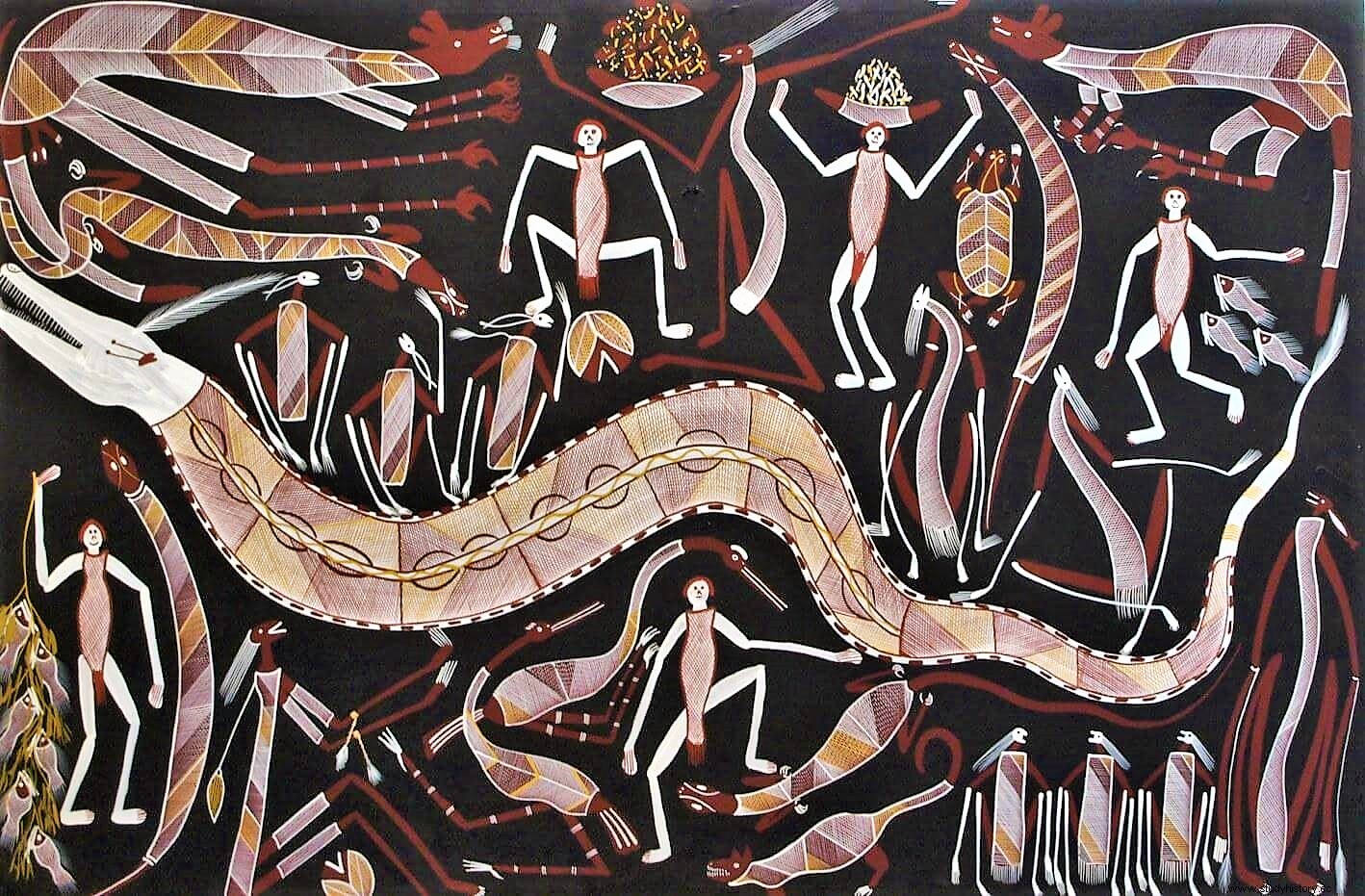
Different local communities attach different importance to the unit. Some communities believe that the rainbow worm is female, while others believe it is male. Others believe it is ambiguous or hermaphrodite or bisexual. Some beliefs also associate this unity with fertility myths and rituals. The snake also appears as a scorpion or other creature or animal. Some of the stories associate it with a bat and often refer to it as a flying fox that is in some rivalry over a lady. In some stories, the snake appears as a crocodile, bird or lizard. Whatever the shape, the device is associated with water. The Rainbow Serpent is often identified with a terrifying, waterhole-dwelling creature known as the bunyip.
It is the Rainbow Serpent that replenishes the earth's water resources, forming deep channels and swallows as it moves through landscapes. According to the indigenous myth, the earth would not get rain at all without this creature. When the snake is angry, it is when thunder and lightning appear. Other cultures believe that the rainbow snake stops rainfall. In addition to its identification with the rainbow, the Rainbow Serpent is also associated with the prismatic halo around the moon. To please the unit and bring rain, some cultures perform rituals with shells and quartz crystals.
The Three Brothers
Three Brothers Mountains are mountains in the Mid-North Coast region of South Wales. The mountains lie between the villages of Laurieton and Moorland, and are of spiritual importance to the Aborigines. They believe that some of their ancestors live there, and the mountains protect them. According to the myth of indigenous peoples, legend has it that three brothers were murdered by a witch known as Widjirriejuggi. They were then buried where the mountains stand today. Legend has it that the brothers belonged to the Biripi tribe and lived near the Camden Haven River. The story, which went from generation to generation, has changed over the years. Different storytelling has led to several different versions.
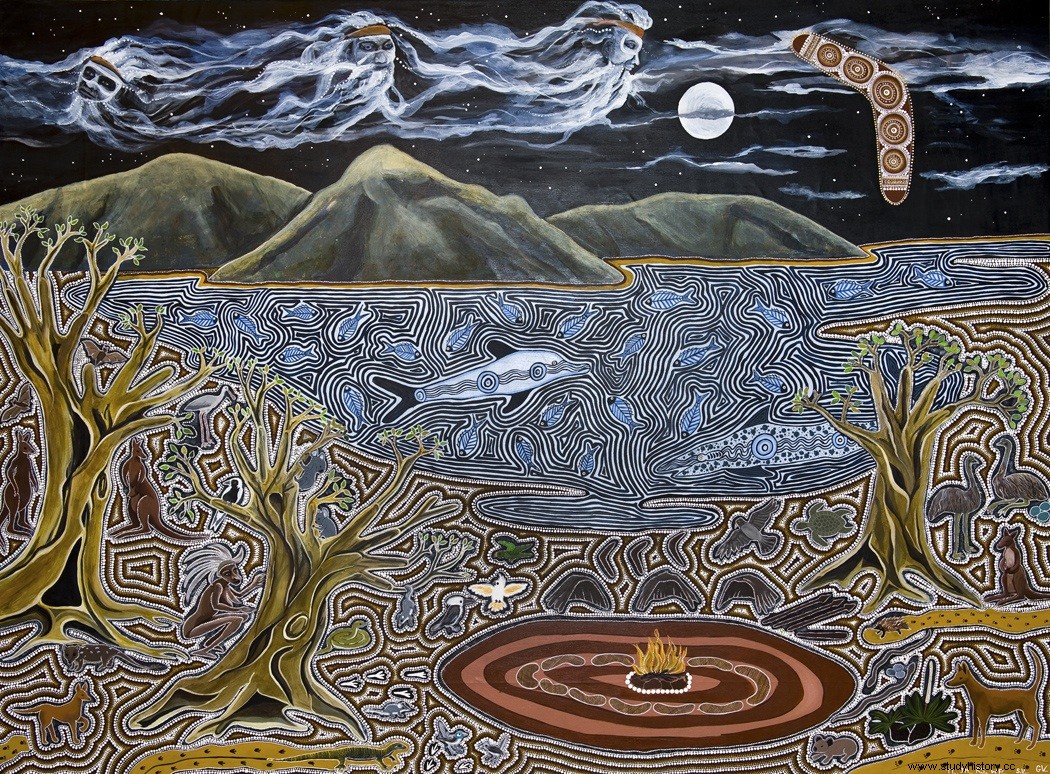
One version that lasted a long time is that the three brothers had undergone the dedication ceremony. They were required to live in the bush for many months before returning to the tribe. When they were isolated, the siblings began to worry about their parents. The youngest volunteered to check on them. When he left, he spotted an old witch near their camp. And when he returned from his parents' camp, he saw that the witch had devoured his brothers. When he saw that he was the next victim, he hit her on the head and killed her. He gathered the brothers' bones and buried them where the two mountains, North Brother and Middle Brother Mountains, stand today. South Brother Mountain is where he went and killed himself out of shame for not protecting his brothers.
Emu and Jabiru
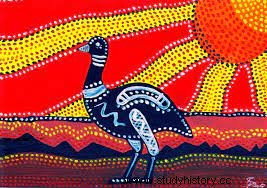
The story of Emu and Jabiru is an Australian indigenous myth. The myth tells the story of greed between two brothers-in-law. Through their battles, they were transformed into the country's first emu and jabiru (a large stork).
The legend begins with a man named Gandji and his children, who fished for stingrays. After catching quite a bit, they return from the fishing trip and offer part of the catch to Wurrpan, Gandji's brother-in-law and his children. However, Wurrpan finds out that Gandji had saved the best fish for his own family. A fight breaks out, and Wurrpan is attacked by Gandji, who throws stones at him. And for fear of what Wurrpan would do to catch up, he starts jumping and flying around until he turns into a jabiru, minus his beak. He only gets his beak when Wurrpan spits at him and it turns into his beak. As for Wurrpan, he and his family become emus so they can run faster and escape. According to the myth of the indigenous peoples, this is how emus and jabirus came to their land.
Why the crocodile rolls
Have you ever wondered why crocodiles roll and drag victims down before devouring them? Aboriginals have an explanation for that. According to the indigenous myth, everything was good and good in the Aboriginal settlements. The people were happy, prosperous and there was no end to food and other resources. The little girls played together, the women prepared the meals and the men trained the boys to take on tribal duties. But village life was not enough for a girl, Min-na-wee, who constantly wanted to choose fights with the other girls and boys. According to legend, her face developed into a hard, scaly one and the elders would always predict that something disgusting would happen to her.
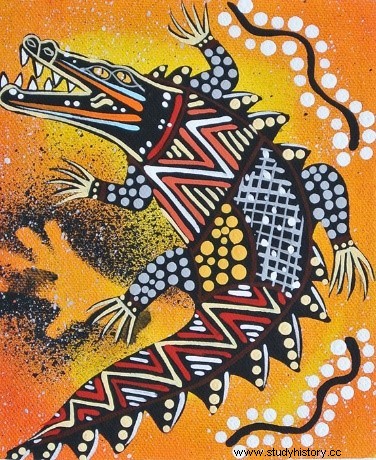
And it apparently did. When Min-na-wee was growing up, no one wanted to marry her since she was a troublemaker. After another terrible match, the elders decided that a certain punishment should be given to Min-na-wee. And to avoid being caught, Min-na-wee began to roll on the ground, calling on evil spirits to turn her into an animal so she could seek revenge. The spirits made her a crocodile, and to this day the aborigines believe that it is the actions of Min-na-wees that now make crocodiles roll their victims before eating them.
Black Mountain
The Black Mountain is tucked away in Queensland. The Aborigines call the mountain Kalkajaka, a traditional name meaning the place of the spear. The Black Mountain was the holy site of many bloody battles between the Dreamtime spirits and the warring ancestral clans. For the eastern Kuku Yalanji Aboriginal community, the mountain is an important meeting place. It is also a source of various Legends about the dream.
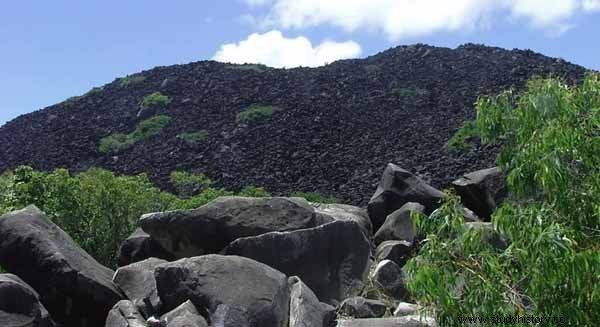
But Black Mountain is more notorious for another reason. The mass of huge granite blocks towering over the landscape is frightening enough. Compared to the green savannah below, the mountain is a pretty formidable sight. The Black Mountain is a scary place with its own mystery. While for indigenous peoples it is a sacred place, outsiders have called it the 'Bermuda Triangle' of Queensland. There are many stories of early explorers, cattle and horses who disappeared without a trace into the boulders on the mountain, never to reappear. According to the indigenous myth, the mountain is a haunted place and home to many evil spirits and demons.
How the water got to the plains
Long ago, when the universe was first created, the Aborigines settled in the mountains. Precipitation was scarce and the natives were worried. When it rained, the rain would just run down the mountainside to the sea, which was far away from any of the settlements. On the other side of the mountain there were some dry plains where nothing could be cultivated. The water decreased in the settlement well. Two men named Weeri and Walawidbit decided to steal what was left of the water and leave the settlement.
So they made a huge water carrier in secret, and called it an eel-a-mouth. At night, when everyone was asleep, the two men stole the water up to the last drop. Came the next morning, everyone was shocked and panicked when they did not see water. The elders of the settlement, when they called for a meeting, saw that the two young men were missing. It was easy to track down the two men because their footprints were quickly found. The warriors of the clan set off and found the men at a distance.
When it came to Weeri and Walawidbit, carrying the heavy water carrier was not easy. The load slowed them down. And the warriors were experts in tracking and hunting, so it was no surprise how quickly they were captured. The warriors started throwing all the spears they had at the two men. One of them hit the water tank, which fell off. Unfortunately, there was a hole in the carrier. In their eagerness to catch the thieves, the warriors did not even notice the leaking water until the box was almost empty. So the two thieves were taken home again and it was decided to be punished for not only stealing, but also for putting themselves first and not society. So Wonmutta, a wise old man in the tribe, turned Weeri into an emu who ran to the plains. As for Walawidbit, he was transformed into a blue-tongued lizard that crawled away in the rock crevices.
According to the myth of the indigenous people, however, the water that had leaked from the carrier had become a water hole. The dry, arid plains had become lush green landscapes where life thrived. And according to the Aborigines, this is how water came to the plains.
The Devil's Pool
The Devil's Pool is a naturally existing pool on a particularly treacherous stretch of Babinda Creek. The brook bed is filled with huge granite blocks. Although it is one of the main attractions in the scenic Babinda block reserve, the pool is also notorious for the many human lives it has required. Aboriginals claim the pool is a place for legends, and the deaths at the pool are linked to the legend.
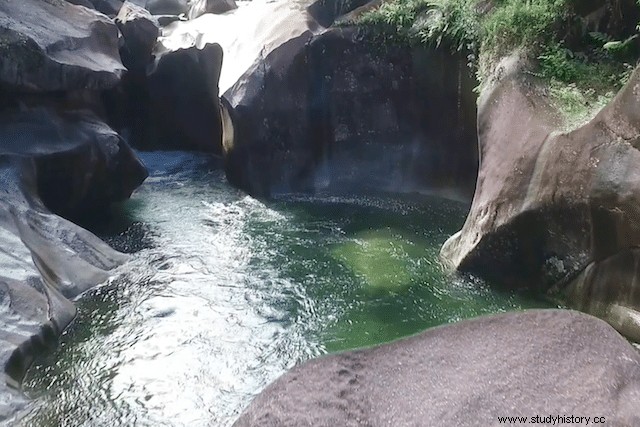
The indigenous myth tells the story of a young woman named Oolana, who was from the Yindinji tribe. Oolana was promised a respected elder in the tribe. But she met a young warrior named Dyga, who, as so often happens, was from another tribe. So they fled from their tribes into the forest to be together. But according to legend, the elders captured them and dragged Dyga away. Oolana escaped and jumped into the Devil's pool in despair. Legend has it that her suffocating wailing turned into pool torrents. According to the myth of the indigenous people, her spirit pursues the Devil's pool and drowns any ignorant person who swims. Locals have put up a sign warning everyone to swim in the pool, especially where the water is deep and the current is dangerous.
Indigenous myths about the crow
According to Australian indigenous myths, the crow plays as a trickster, an ancestor and a cultural hero. Legends about the crow are different among the different cultures in Australia.
A common legend tells how the crow played an important role in bringing fire to humans. According to the story told by the Wurundjeri people of the Kulin nation, at the time of the creation of the universe, the fire was closely guarded by the seven Karat cucumber ladies who lived near the Yarra River (where today's Melbourne stands). The women carried lit coals on the ends of sticks and cooked jams. The crow wanted the fire, but the women refused to share it. Then the crow turned to rob the women — he hid some snakes in an anthill and called the women over. He claimed that there was some food hidden inside, which the women began to dig. Only snakes ran towards them. The women began to beat them, and made the lit coals from the sticks fly. This was enough for the cunning crow to float in and steal them.
According to another indigenous myth, the crow flew over the Murray River when he came across the Swamp Hawk. To fool the bird, the crow planted echidna feathers in an empty nest of a kangaroo rat and lured the Swamp Hawk to jump into it. Although the bird ended up with a quill on its feet, it was gratifying to find that it could catch food more easily.
The conclusion
It is easy to see that the Aborigines have a deep connection to their country. Any phenomenon that occurs on their land is explained as the activities of the spirits. While non-natives can attribute scientific explanations to the myths, the myths are part of the Aboriginal people's dream time. To this day, myths and legends form a core part of the beliefs of Aboriginal clans.
